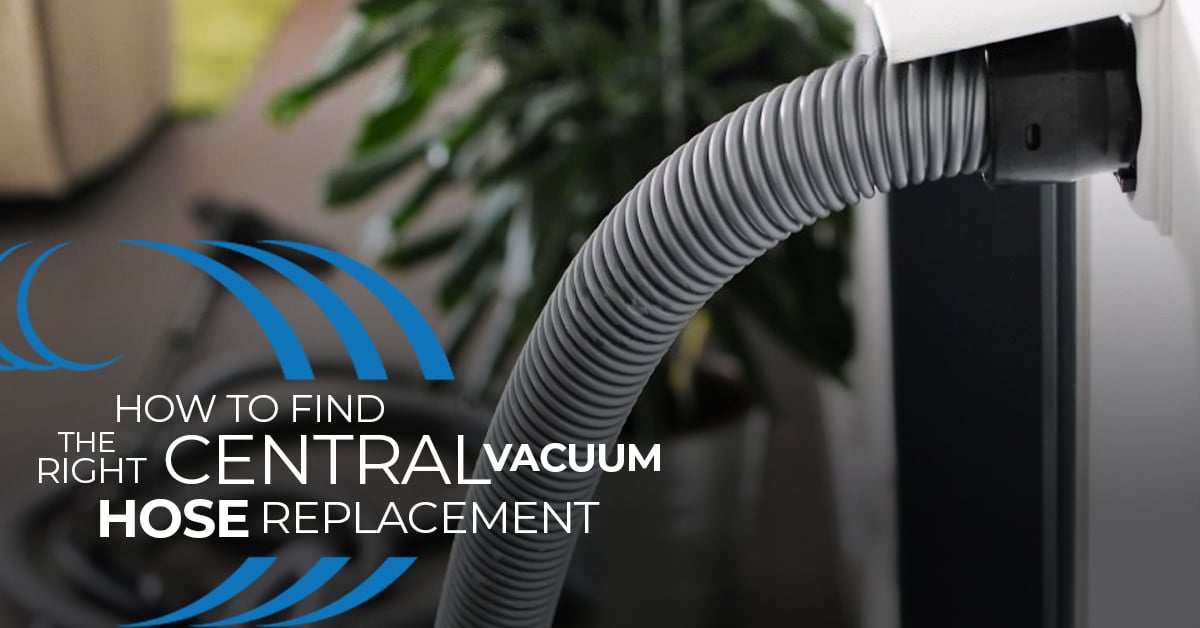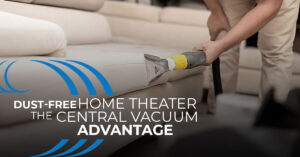
Boosting Productivity in Office Buildings with Central Vacuum
In today’s fast-paced work environment, maintaining a clean and organized office space is crucial for productivity. Office buildings often struggle with keeping their premises clean

A central vacuum system can give you with a lot of convenience and benefits. However, just like any other machine, there will be occasions when the system, including the cleaning hose, will fail.
The central vacuum hose, which is lightweight and is at least 30 feet in length, serves as the connection between the central vacuum and other attachments included in a central vacuum kit. It is plugged into a vacuum inlet valve, which then switches on the central vacuum unit or simply uses the suction of the vacuum.
Most central vacuum hoses are designed to be crush-proof. However, they can also get punctured or clogged, just like any other hose. So, whether your hose requires repair or replacement, there are a few things you should think about before having it repaired or purchasing a new one.
Despite the fact that certain central vacuum systems can last up to 30 years, the hoses typically have a significantly shorter lifespan, and this actually depends on usage.
Compared to the primary system, the hoses endure a lot more damage. In addition to being walked on, pulled against, and rubbed against, they occasionally suck up unwanted objects. Since they are the foundation of the central system, you will eventually need a central vacuum hose replacement or have your hose repaired.
Inlet valves are the main component of a central vacuum system. They are often located in every room of a house, typically in an out-of-the-way area such as a closet, garage, or basement.
If you need to replace your central vacuum hose, you can use your inlets as your guide to determining the right kind of hose to buy. Some vacuum hoses might not work with the inlet valves in your system. These cannot activate the power unit or fit into the inlets.
Universal central vacuum hoses are sold by numerous businesses. With any central vacuum or hidden hose system, you can use a regular universal hose. For the greatest results, you need, however, to check the vacuum system inlets to see if your system uses a normal, low voltage, or electric hose.
Standard Hoses have no electrical wiring or on/off switches. When plugged in, they only turn on the system, and when disconnected from the inlet valve, they turn it off. These hoses are ideal for non-carpeted surfaces, such as those in garages and basements.
Low-Voltage Hoses have a simple on/off, two-way switch that operates the power unit. People with hard flooring and only a few area rugs or carpets typically use this style of hose. With a few exceptions, the majority of these hoses are universal.
Electric Dual-Voltage Hoses have a three-way switch that operates the central vacuum’s power unit and electric power head with roller brush. A direct connection or a pigtail connection are the two different ways to provide energy to the power head through the hose.
You have an electrical power inlet if the hose handle has a two-prong female plug. Knowing if your wall inlet is direct connect or needs a pigtail cord is essential.
The standard length of a central vacuum hose is 30 feet; however, you can also find hoses that are longer than the industry standard. Homewave provides a central vacuum kit that includes a 35-foot hose that reaches virtually every corner of a room. If the space you’re cleaning is really wide or open, you can also find hoses that are even longer. A longer hose covers a larger area without having to be disconnected and reconnected from one inlet port to another.
To determine whether the issue is with your hose or not, plug it directly into your power unit’s utility inlet. By doing this, any chance of a clog or other problem in the wall pipes will be avoided.
If your hose does not turn on the power unit after plugging it in, have it serviced or replaced.
You should follow these steps to ensure your hose needs to be replaced, not just maintained and cleaned:
You can also follow these steps to remove clogs from your hose:
Certainly, central vacuum hoses can be fixed. A fix is usually all that is required. Manufacturers have stated that if you are using a low voltage or direct connect hose, the switch assembly is typically to blame if the hose is no longer turning the system on and off. This is frequently a quick, low-cost fix that only requires a new switch component. To repair hoses, it is also possible to buy handle replacements, kits, and cuffs.

In today’s fast-paced work environment, maintaining a clean and organized office space is crucial for productivity. Office buildings often struggle with keeping their premises clean

Central vacuums in animal shelters & vet clinic: Explore how these systems boost hygiene, efficiency, and air quality.

In the world of home entertainment, a home theater is a luxury that many homeowners dream of. It’s an immersive experience that brings the magic

A central vacuum system is a significant investment that promises convenience, powerful suction, and improved indoor air quality. However, choosing the right central vacuum hose
Our home automation products are at the forefront of technology, offering a blend of convenience, security, and efficiency. As a Homewave dealer, you’ll be part of a network transforming homes into smart, futuristic spaces.
Embark on this rewarding journey with us and leverage the power of innovative technology.
Please fill out this form and become a Homewave Dealer.